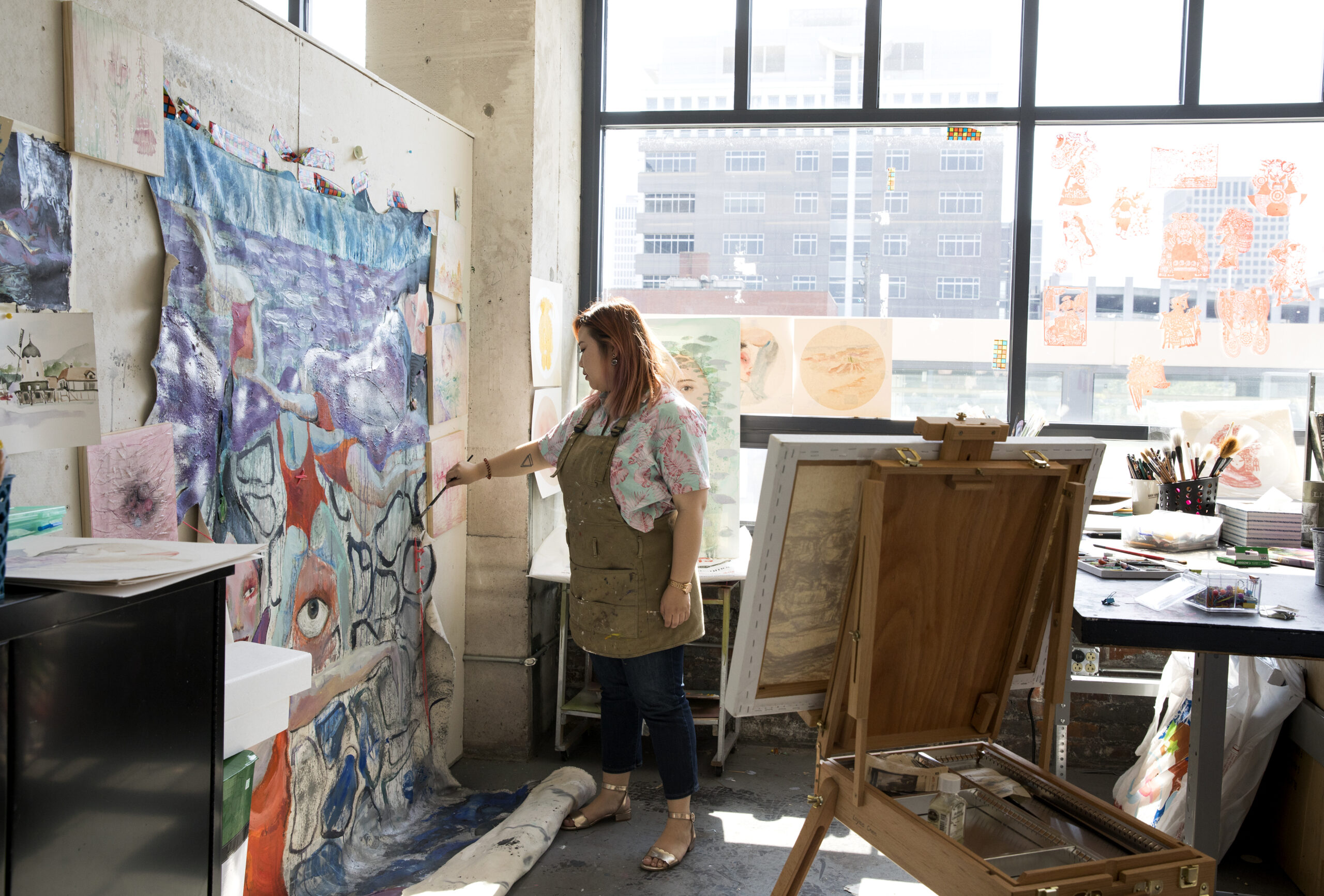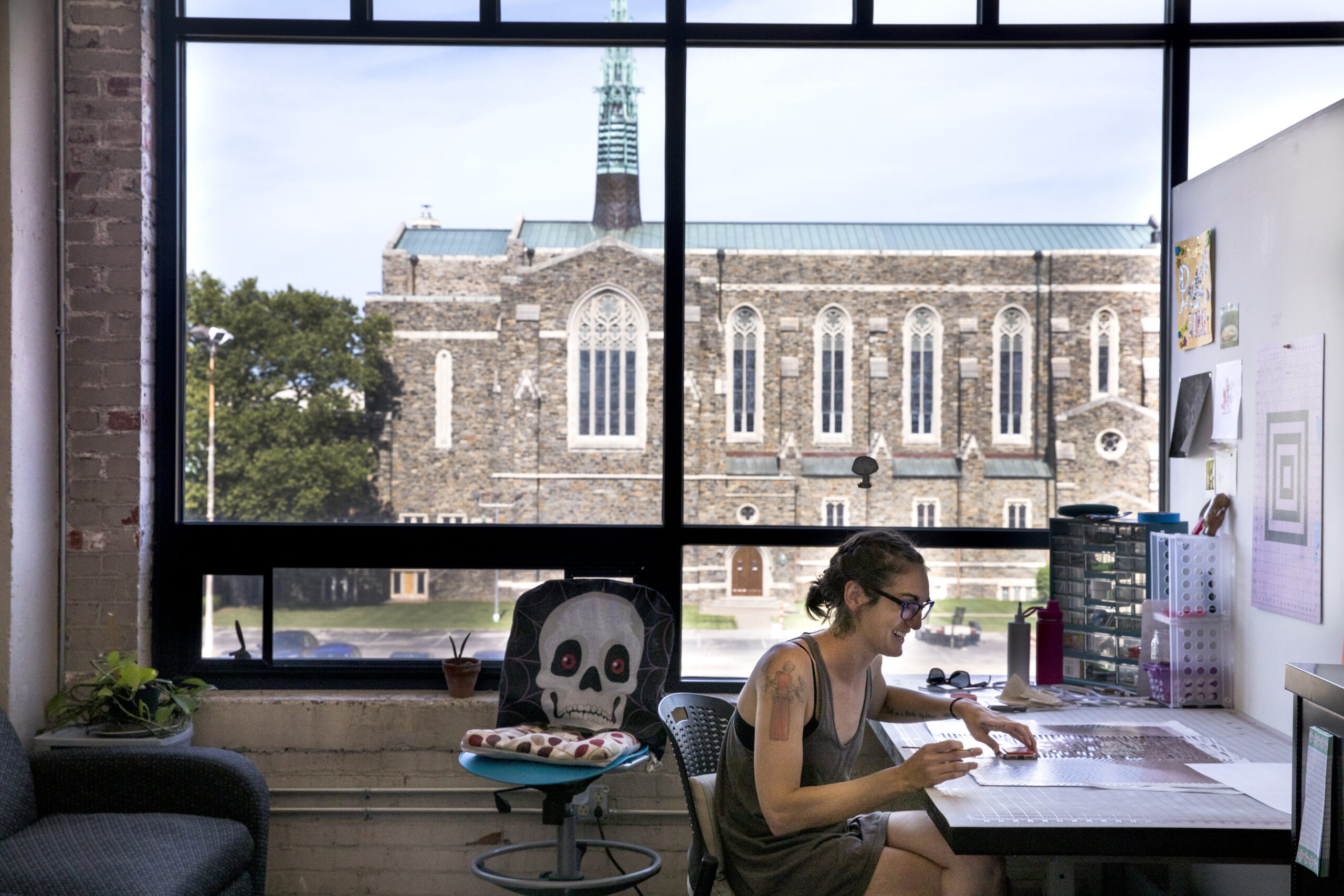Memory- and Meaning-Making Through Place – By Guest Blogger Dr. Melanie Corn
I recently had the opportunity with a group of my peers to reflect on five years in a leadership organization. After sharing a few memories from our time, someone noted that I situated each of my stories in a very specific place.
I hadn’t thought about it before, but it’s true that my memories tend to be viscerally connected to specific places. While the sense of smell may be known to trigger memory, those memories come to life through the spaces that house them.
The smell of roses reminds me of my grandmother and her prized rose garden. But that memory is as fleeting as the scent. Where I see Dora more clearly, where I feel her, is in her kitchen. The cramped galley kitchen where she would bake sourdough bread, where she would reach into the hot soapy water of her wash basin and pull out clean dishes for me to dry, where we all would squeeze around the kitchen table—legs sticking to the vinyl bench seat in the summer, oversized fork and spoon “sculpture” on the wall behind us—to play euchre.
Specific spaces are pin drops on the map of my life. The shag-carpeted den in the suburban split level? Sleepovers with my best friend. The back left corner of an over-air-conditioned movie theater? My first kiss. Standing in a crowded Sistine Chapel? Where my study of art history came to life. Sitting side-by-side on the steps of Golden Gate Park? A marriage proposal. Sitting side-by-side on the steps of our first house? A cancer diagnosis.

Of course, space is not simply a sentimental reminder of the past. It creates meaning in the present. This is just one of the many challenges we all experienced over the past three years. Remote work and Zoom culture allowed us to literally and virtually be in any place and work from any space; for those of us who tie meaning to place, the collective “meaning making” so important to strategic work and education was severely hampered.
While one coworker’s persistent cat walking across the keyboard and another’s hands that would always disappear into their virtual beach background offered momentary reminders of space, they usually only further emphasized the fact that we weren’t truly together in the same place, on the same page. Thankfully, back in the office, I am re-energized by the heated brainstorming sessions crowded into a small conference room where each of us jumps up to take a turn at the white board. I am glad my open office door invites coworkers in for a quick chat at my desk or a lengthier “couch conversation” when it’s time for reflection and connection.
The embracing of WFH culture might lead me to believe I am alone in my desire to connect and collaborate in person, in place. However, as president of Columbus College of Art & Design (CCAD), I am lucky enough to be surrounded by a thousand students who thrive in a place-based educational environment.

Art and design can be taught online, and we even did it at CCAD when we absolutely needed to at the height of the COVID-19 pandemic. But, I believe the power of a creative education is learning together in the studio. The small class mentorship model, critique culture, iterative process, collaboration, and project-based learning core to what we do here are greatly enhanced by working together shoulder-to-shoulder.
Further, as a residential college, many of our students live on campus. For most, this is the first time they will have lived in a diverse community. The goal of a CCAD education is to enhance the individual student’s life and provide them the opportunity for success in a creative career. But, there are also larger goals about contributing to an educated democracy, about inspiring in each student a respect and care for others that goes beyond tolerance and leads to a collective commitment to building a more just and equitable society. Learning together, living together helps us reach these goals.
That’s why our campus is critical to CCAD. We continue to invest in our infrastructure, because meaningful spaces inspire meaningful work. The making tools and technologies provided in our studio spaces are critical to our students’ art and design practices. But, beyond those specific assets, the spaces themselves are important. The comfy couches tucked into the illustration lounge where the students gather for impromptu crits, the corner studio with the good light and more dress forms than table space where fashion design students work together long hours on their senior collections, the multifunctional drawing room that is transformed into a live-animal sketching session one day and a virtual gaming lab the next, the dorm room where students hang out late at night to share their work and their dreams. These are the places that make memories. These are the places that make artists and designers.
Dr. Melanie Corn is the President of Columbus College of Art & Design. Since joining the college in 2016, she has focused on the importance of the creative economy and the critical role CCAD plays in the success of its graduates and the region as a whole. Dr. Corn also serves on multiple regional and national boards and has been named one of Columbus Business First’s Power 100: The City’s Most Influential Leaders.

